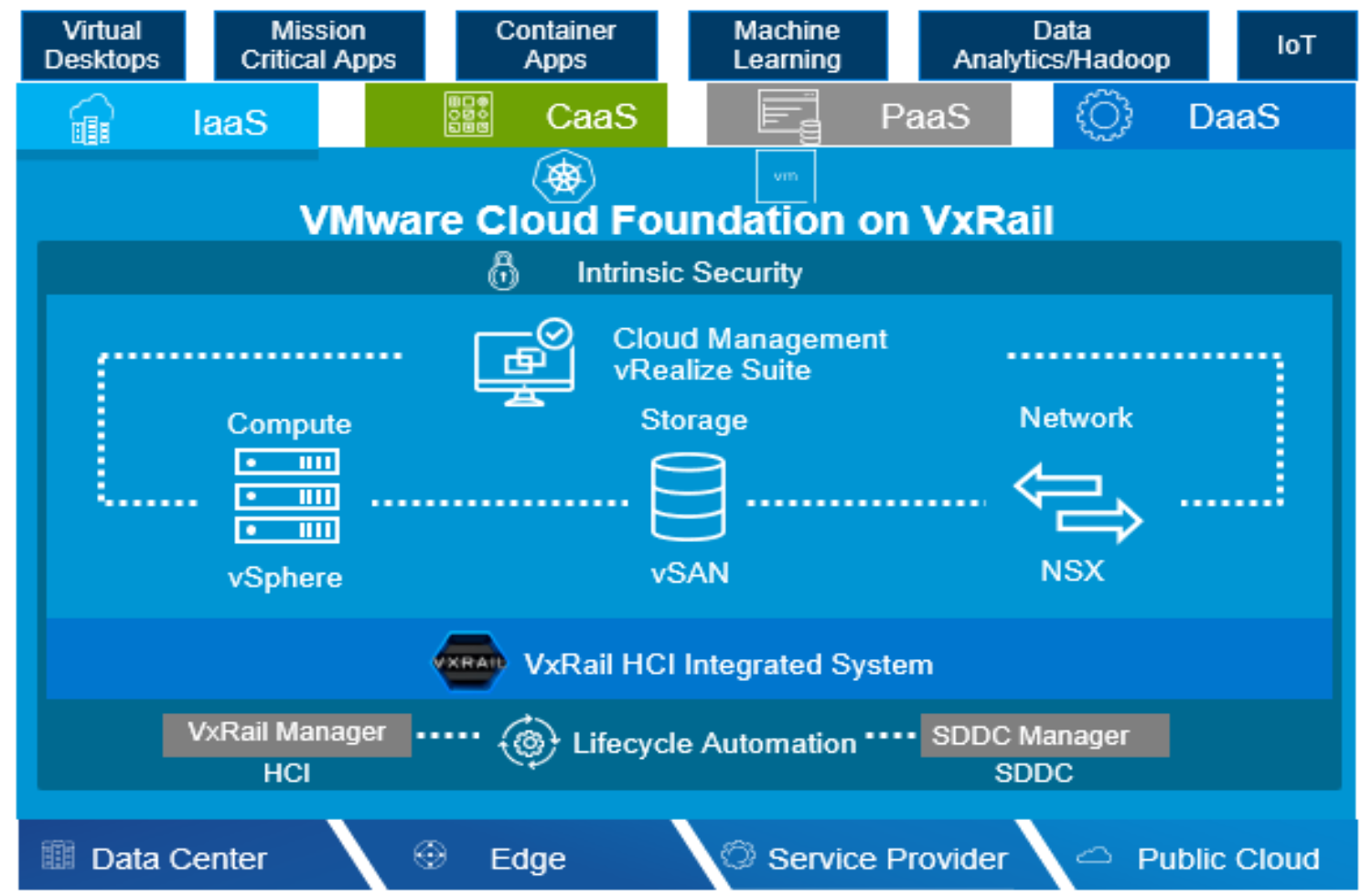Home > Integrated Products > VxRail > Guides > Architecture Guide—VMware Cloud Foundation 5.1 on VxRail > Introduction
Introduction
-
You can virtualize all your infrastructure and deploy a full VMware SDDC with the benefit of automated SDDC life-cycle management (LCM) by implementing a standardized VMware SDDC architecture on VxRail with Cloud Foundation. This solution includes NSX for Network Virtualization and Security, vSAN for SDS, VMware vSphere 8 for Kubernetes, Tanzu Kubernetes Grid, and SDDC Manager for SDDC LCM.
By virtualizing all your infrastructure, you can take advantage of what a fully virtualized infrastructure can provide, such as resource utilization, workload and infrastructure configuration agility, and advanced security. With SDDC software life-cycle automation provided by VCF (and in particular SDDC Manager, which is a part of VCF on top of VxRail), you can streamline the LCM experience for the full SDDC software and hardware stack.
You no longer need to worry about manually performing updates and upgrades using multiple tools for all the SDDC SW and HW components of the stack. These processes are now streamlined using a common management toolset in SDDC Manager with VxRail Manager. You can begin to take advantage of the data services benefits that a fully virtualized infrastructure can offer along with SDDC infrastructure automated LCM. An example of data services is using software-defined networking features from NSX such as microsegmentation, which was nearly impossible to implement using physical networking tools.
Another important aspect is the introduction of a standardized architecture for how these SDDC components are deployed together using VCF, an integrated cloud software platform. Having a standardized design incorporated as part of the platform provides you with a guarantee that these components have been certified with each other and are backed by Dell Technologies. You can be assured that there is an automated and validated path forward to get from one known good state to the next across the end-to-end stack.

Figure 1. Architecture overview
